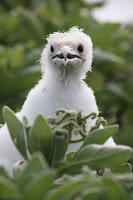Bundaberg is a city in Queensland, Australia and is our first port in Oz. Bundaberg is dependent to a large extent on the local sugar industry. Extensive sugar cane fields are found throughout the area and operations such as the milling and refinement of sugar, and its packaging and distribution are located around the city. Another of the city's exports is Bundaberg Rum, made from the sugar cane by-product molasses. Bundaberg is also home to beverage producer Bundaberg Brewed Drinks. We have been drinking their Ginger Beer since halfway across the Pacific.
We stayed at the port marina and check in went smoothly upon arrival. They took very little since we had eaten all of our meat and most of our other food. We made good use of their courtesy van and even rented a car on one day of our week-long stay. We knew immediately that we were not in Kansas anymore when Emily spotted kangaroos hopping around behind the marina.
We got most of the dingy problems sorted out, replaced one laptop computer that died and re-stocked the freezer and food stores and started planning our trip north. Looking at the charts, it is clear that we are on the same track as Captain Cook. I see Endeavour Reef where he almost lost The Endeavour. Cape Tribulation, Weary Bay, Hope Island and Cooktown, where he repaired the ship, all were named by Cook and document his feelings as he came through this same area. We shall see some of these places, but will be sure to keep water under the good ship Emily Grace as we move through this mighty reef system.
Please join us…
Tom






















